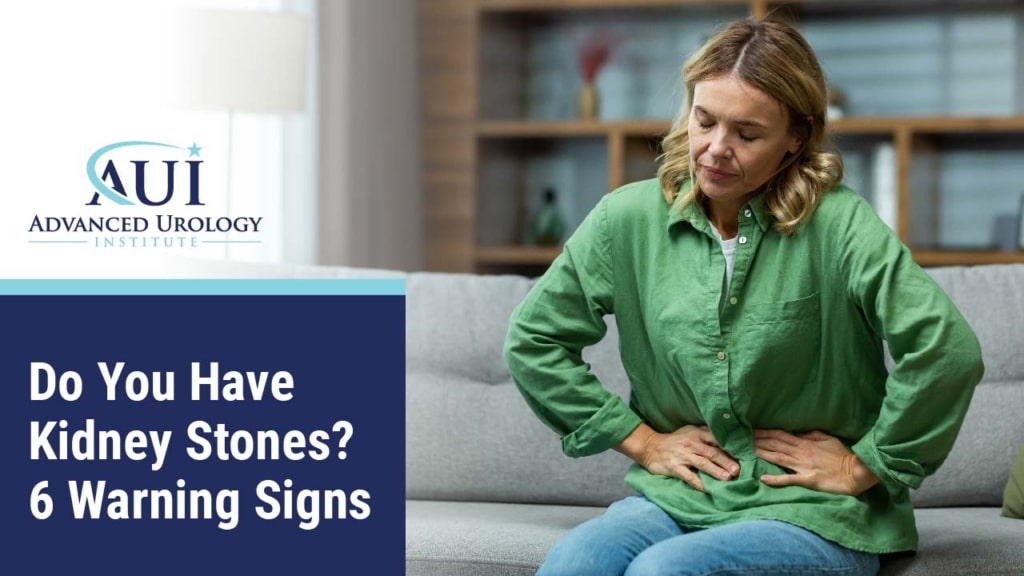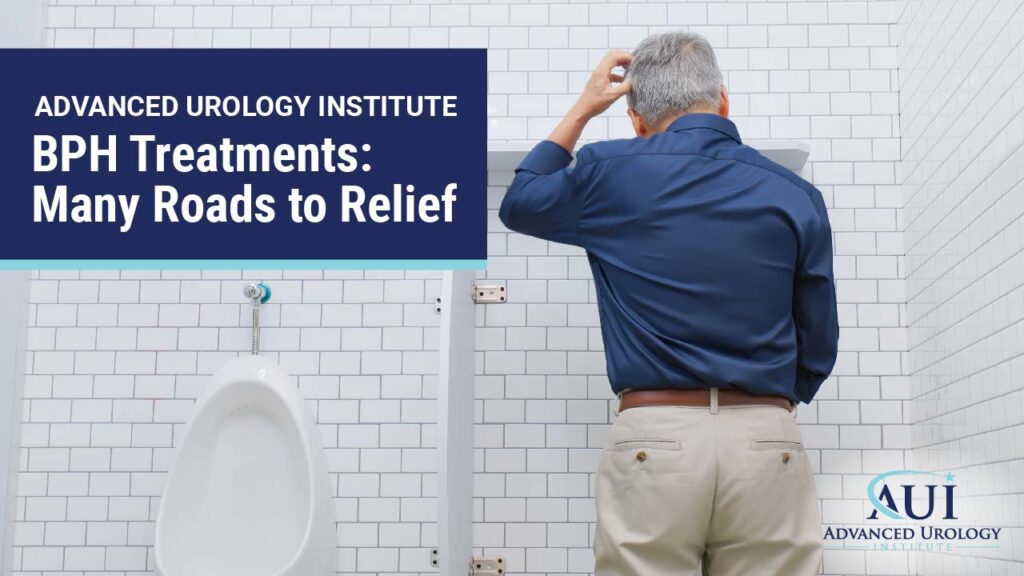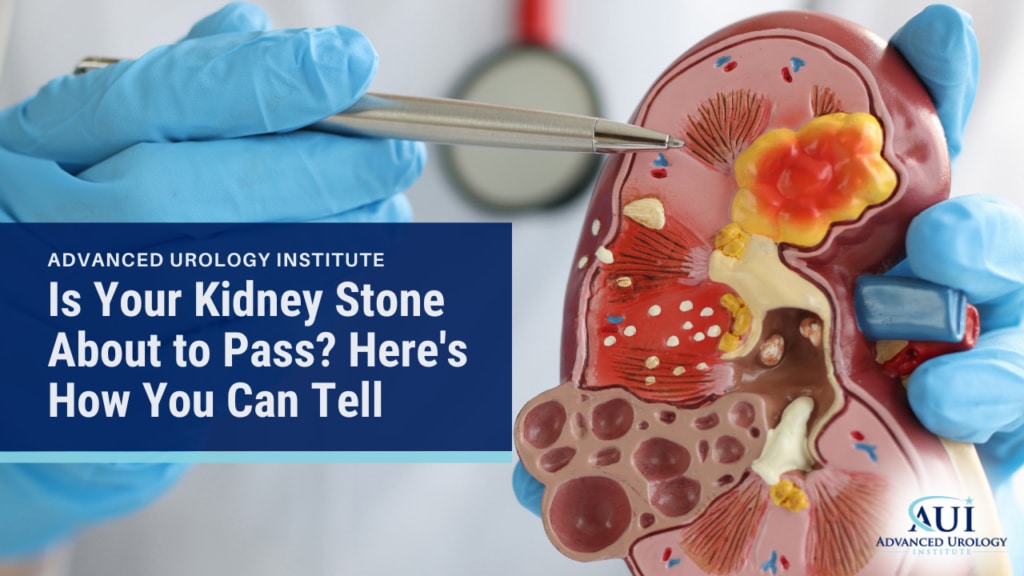Symptoms of kidney stones
At Advanced Urology Institute, we see a lot of patients with kidney stones. A contributing factor is our location in Florida, with its massive heat and humidity which leads to dehydration and, unfortunately, to the formation of these painful stones in the kidneys. The stones commonly present with severe, intense pain — like something is stabbing you — and you can barely walk. Kidney stones are characterized by sharp pains in the side or back as they make their way to the bladder. Most of our female patients usually say the stones are more painful than labor pain. Other symptoms of kidney stones include vomiting, nausea, a constant urge to pass urine and blood in urine.
Pain from kidney stones is often sudden in onset, though it may get severe over a period of hours in some cases. The pain may be either intermittent (colicky) or steady and, depending on the stone’s location as it moves through to the bladder, it may begin in the back or flank area and radiate slowly downward to your inguinal ligament, urethra, bladder, testicles or penis. Urinary or bladder symptoms, such as frequency of urination and painful urination, may occur if the stone is located in the portion of your urethra found within the bladder wall. Not all stones cause pain and some of them are often discovered “incidentally” during pelvic or abdominal X-rays. But in patients who experience pain, they usually describe it as the worst pain they have ever experienced.
Diagnosis of kidney stones
Diagnosis of kidney stones is almost entirely based on the history of passing the stones or on occurrence of a stabbing pain in the side or back. We usually place emphasis on the patient’s clinical signs, familial disorders, presence or absence of any previous renal stones, or physical exam findings. We also perform a urinalysis to check the presence of white cells (pyuria) or blood (hematuria) in urine, a culture of urine to exclude infection, and use the presence of crystals in urine (crystalluria) to help identify the stone type. Patients are often required to strain their urine to obtain the stone for crystallographic analysis. Analyzing kidney stones for their mineral composition helps us understand your future risk and to recommend the right dietary habits and restrictions for preventing stones. But we also do a CT or CAT scan of the pelvic and abdominal area to evaluate the size, location, degree of hydronephrosis and density of the stone, all of which are important in determing how we treat and manage the stones.
Treatment
When patients complain of symptoms of kidney stones, we usually do physical exams and run tests to confirm that they actually have stones. But we often begin by getting the pain under control and calming the patients, to enable us to discuss with them available treatment options. The pain due to kidney stones is relieved using pain medication, drinking plenty of fluid to prevent dehydration, and ordering bed rest. In many cases once we have assessed that the stones can pass on their own, we allow about 7 days for them to pass spontaneously. In other instances, however, kidney stones may need to be broken down into tiny pieces or to be removed surgically.
At Advanced Urology Institute, we break up kidney stones using such techniques as percutaneous lithotripsy, cystoscopy or extracorporeal shock-wave lithotripsy. For renal stones less than 2cm in size, we generally treat them using extracorporeal shock-wave lithotripsy. During the procedure, high-intensity ultrasound (shock-waves) are passed through pouches of water placed on the skin and then directed toward the stone. The waves break the kidney stones into tiny pieces that can pass easily through the ureter. For stones located higher in the ureter or in the bladder, we often use cystoscopy to pull them out or break them up with electric energy or laser. During the procedure, the doctor passes a viewing tube with a crushing device into the ureter or bladder to pull the stone out or break it up with electric energy or laser.
For larger stones, percutaneous nephrolithotomy is a safe and reliable technique. For this procedure, you’ll be given medication to sedate you, then a viewing tube will be inserted through an incision made in your side. Once the stone is reached, it’s broken up using electric energy or ultrasound. In cases where this procedure doesn’t work, particularly when the stones are hard to reach or too large, surgery is often the preferred treatment. Surgery to remove kidney stones is performed under general anesthesia with the doctor making an incision into the side and another into the kidney or ureter to remove the stone. After the stone is removed, the incisions are stitched up.
There are many ways of treating kidney stones and the method chosen usually depends on the experience and judgment of the urologist, together with the patient’s preferences. At AUI, we prioritize the comfort of our patients, so we opt for the least invasive procedures before considering surgery. Want to know more about prevention, diagnosis and treatment of kidney stones? Find more information from the “Advanced Urology Institute” site.






